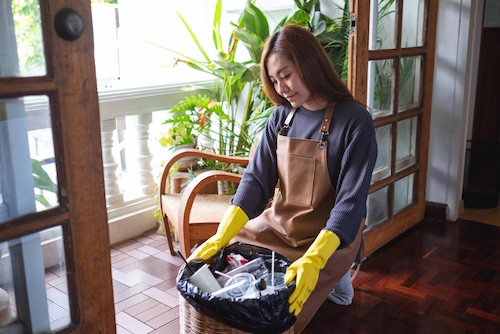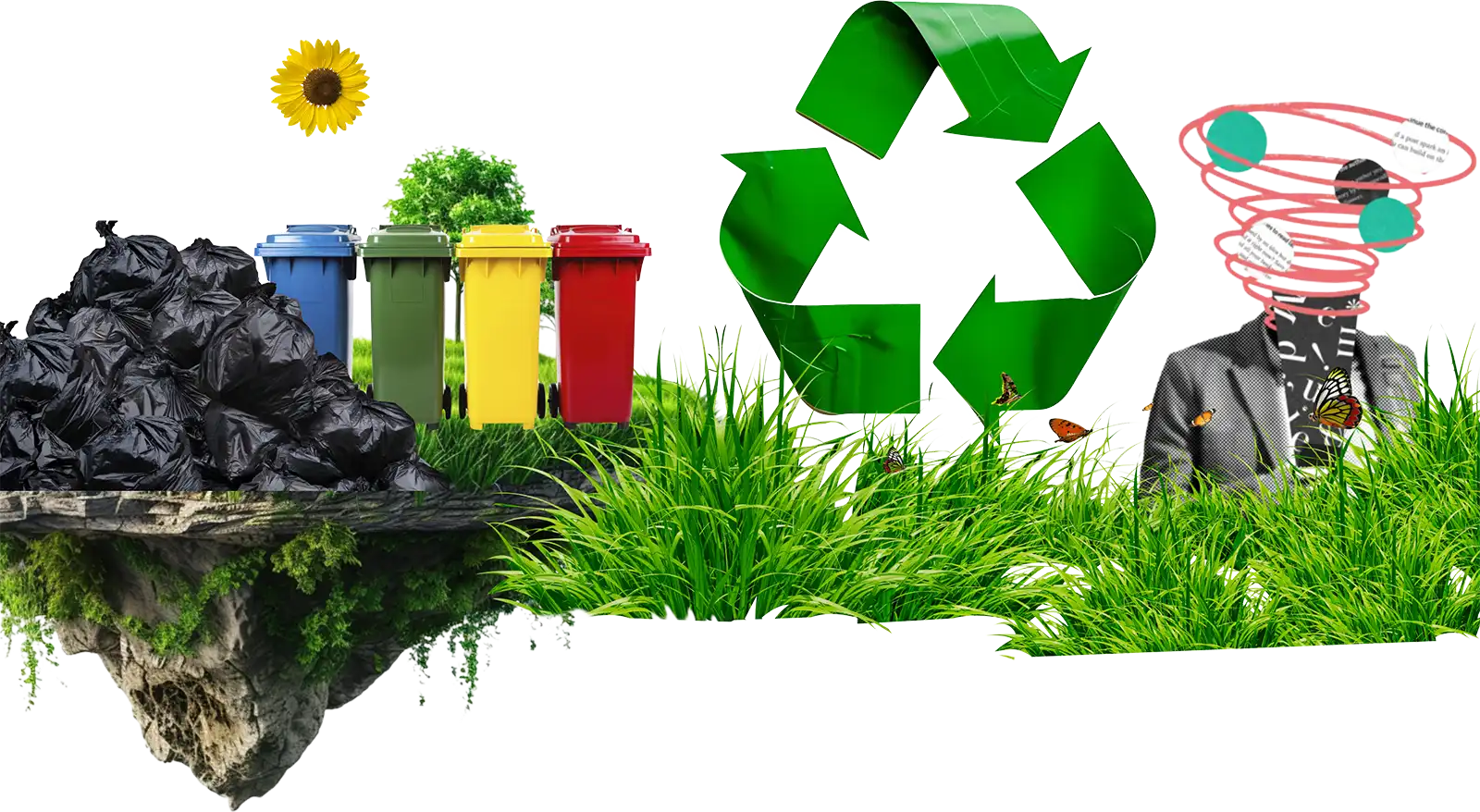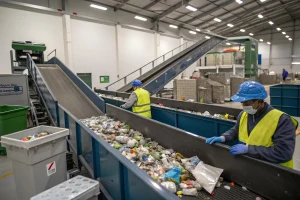Table of Contents
Warga Asri, have you adopted an environmentally friendly lifestyle in your daily lives? Small habits, such as avoiding impulsive buying, have a significant impact on preserving the Earth and creating a healthier environment.
If you feel that you’re not yet accustomed to it, don’t worry, because an environmentally friendly lifestyle begins with simple things. So, follow the discussion below to find inspiration for concrete steps that you can immediately implement!
What Is an Environmentally-Friendly Lifestyle?

An environmentally-friendly lifestyle is a way of life that focuses on daily habits that do not harm nature and strive to maintain the balance of the ecosystem.
The primary principles are to utilize resources wisely, minimize waste, and go for more sustainable alternatives. That way, we can reduce the negative impact on the earth to maintain a healthy environment in the future.
Examples of an Environmentally-Friendly Lifestyle

Adopting an environmentally-friendly lifestyle is not always difficult. With simple daily habits, you can help protect the Earth. Here are some practical examples that you can immediately apply to live a greener and more sustainable life.
1. Saving Electricity
Conserving energy wisely is a simple way to support an environmentally friendly lifestyle. This is because excessive electricity consumption increases pollution from power plants, particularly those that still rely on fossil fuels.
To reduce electricity consumption, make it a habit to turn off devices when not in use, use energy-efficient light bulbs, and choose low-power household appliances. In addition to being environmentally-friendly, this habit also helps reduce your monthly electricity bill.
Read also: Slow Living: A Solution to a Calm and Meaningful Life
2. Not Burning Garbage
Burning garbage produces air pollution that is harmful to health. The smoke can cause respiratory problems and environmental pollution. It is better to sort garbage according to type. That way, garbage can be recycled or processed into something more useful, such as compost.
3. Using Public Transportation
Using public transportation helps reduce the number of private vehicles on the road. This reduces air pollution and carbon emissions. Additionally, travel costs are more economical. By regularly taking the bus or train, you are helping to maintain air quality and reduce traffic congestion.
4. Conserving Water
Conserving water is an integral part of an environmentally friendly lifestyle. Clean water is becoming increasingly scarce, so it must be used wisely. Therefore, use water responsibly for bathing or washing, and remember to turn off the tap when not in use.
5. Not Using Disposable Wipes
Reducing the use of wipes helps reduce tree logging. Instead, you can use a washable cloth or towel. This habit is also more economical and environmentally friendly because it reduces household waste.
6. Reducing Food Waste
Another example is reducing food waste. Reducing food waste means minimizing the leftovers that are thrown away in vain. You can start this habit by planning your grocery shopping and recipes according to your needs so that you don’t buy too much.
7. Planting Trees or Plants at Home
Besides reducing food waste, you can also start planting trees or plants at home. This is because the trees or plants you plant will help absorb carbon dioxide and produce clean oxygen.
8. Separating Organic and Inorganic Waste
Separating inorganic and organic waste is very important to reduce environmental pollution. Organic waste such as leftovers, dry leaves, or fruit peels can be processed into natural compost. Compost helps fertilize the soil.
Meanwhile, inorganic waste such as plastic, glass, or metal can be sorted for recycling. Plastic can be turned into handicrafts or new valuable products. This separation helps reduce the volume of waste that is difficult to decompose in nature.
Read also: Knowing Rainwater Harvesting as a Solution for Clean Water!
9. Recycling Used Items
Used items are not always trash. With a bit of creativity, you can transform plastic bottles into beautiful plant pots. Used cardboard boxes can be used as storage containers. Recycling helps reduce waste and keep the environment clean.
10. Using Electric Vehicles
The use of electric vehicles helps reduce air pollution because they do not produce exhaust emissions. These vehicles utilize electricity, which is a more environmentally friendly alternative to fossil fuels.
In addition to being environmentally friendly, electric vehicles also have lower operating costs. By switching to electric vehicles, you are supporting green technology and environmental sustainability for a cleaner future.
11. Repairing Items Instead of Throwing Them Away
How often do you throw away damaged items? From now on, instead of immediately throwing away damaged items, try to see if they can be repaired.
By repairing them, you can save money and reduce waste. Many items, from electronics to clothing, can still be used after repair.
12. Using Environmentally Friendly Products
Using eco-friendly products means choosing items that are safe for the earth and easily biodegradable. You can choose biodegradable soaps, detergents, or cosmetics. This is because these products do not leave harmful residues in the soil or water.
13. Joining an Environmental Community or Social Action Group
Joining an environmental community will make you more aware of the importance of protecting the Earth. You can participate in activities such as planting trees, cleaning rivers, or other environmental education programs. These activities will also expand your social network and give you new experiences.
Benefits of an Environmentally-Friendly Lifestyle

Adopting an environmentally-friendly lifestyle not only has a positive impact on the Earth but also provides benefits for your health and quality of life. Here are some of the benefits of an environmentally-friendly lifestyle that you can experience:
- Energy-saving habits, reducing excessive consumption, and reusing items can significantly reduce household expenses.
- By recycling and repairing items, you can significantly reduce the amount of waste that ends up in landfills.
- Efficient use of water, energy, and raw materials helps preserve natural resources for future generations.
- Minimizing the use of private vehicles and fossil fuels contributes to reducing greenhouse gas emissions.
- By limiting the use of motor vehicles and throwing garbage in its place, the air and water in your environment will be cleaner and healthier.
These are examples of environmentally friendly lifestyles that you can incorporate into your daily life. Every small step you take can bring significant changes to the Earth.
If you are a young generation who cares about the planet and wants to engage in more meaningful activities, Indonesia Asri is the ideal place for you. Here, you are invited to participate in various real actions that contribute to the preservation of the surrounding environment.
Join Indonesia Asri through programs such as #AksiAsri, which allows you to learn, share experiences, and practice environmentally friendly habits in real life. What are you waiting for? Sign up now!
Read also: What Is Bioremediation? Learn Its Types and How It Works










